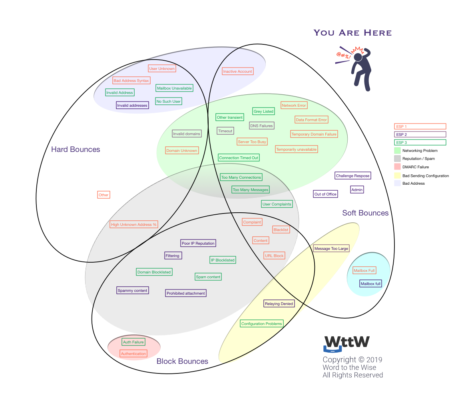Diagnosing Hard Bounces
- steve
- January 28, 2025
- Delivery improvement , Technical
A very short post about diagnosing hard bounces, because I’ve had to give the same advice to a dozen folks over the past few months.
When you’re diagnosing and mitigating hard bounce rates the first thing you’ll see is your ESPs dashboard or reporting. It’ll tell you how many emails you sent bounced, and how that number has changed over time. A useful start.
But a hard bounce can be caused by any of a dozen or more reasons, and they’ll imply different causes for the issue, and very different approaches to mitigation.

The first thing you want to do is to find out details of what’s causing your bounces, by getting hold of the actual rejection messages the recipient ISP returned. They might be available somewhere in your ESP reporting, or you might need to reach out to your support contacts to get them. But an ESP will have access to them (if they don’t … think about looking for a better ESP).
They’re easy to recognise – they’ll start with a three digit number, typically starting with a 5 (or maybe a 4). After that will be some human readable text, and maybe a link to a web page.
The human readable text will describe why the email was rejected. If there’s a link that page will give you more information about the recipient ISPs expectations, and what needs to be improved.
That might be enough for you to understand what’s going on, and if it’s not then those rejection messages are what any expert you ask for help is going to want to see.